The best electric bike conversion kits 2025 and how to fit them
Add power to any bike at a fraction of the cost of a full machine with one of the best ebike conversion kits
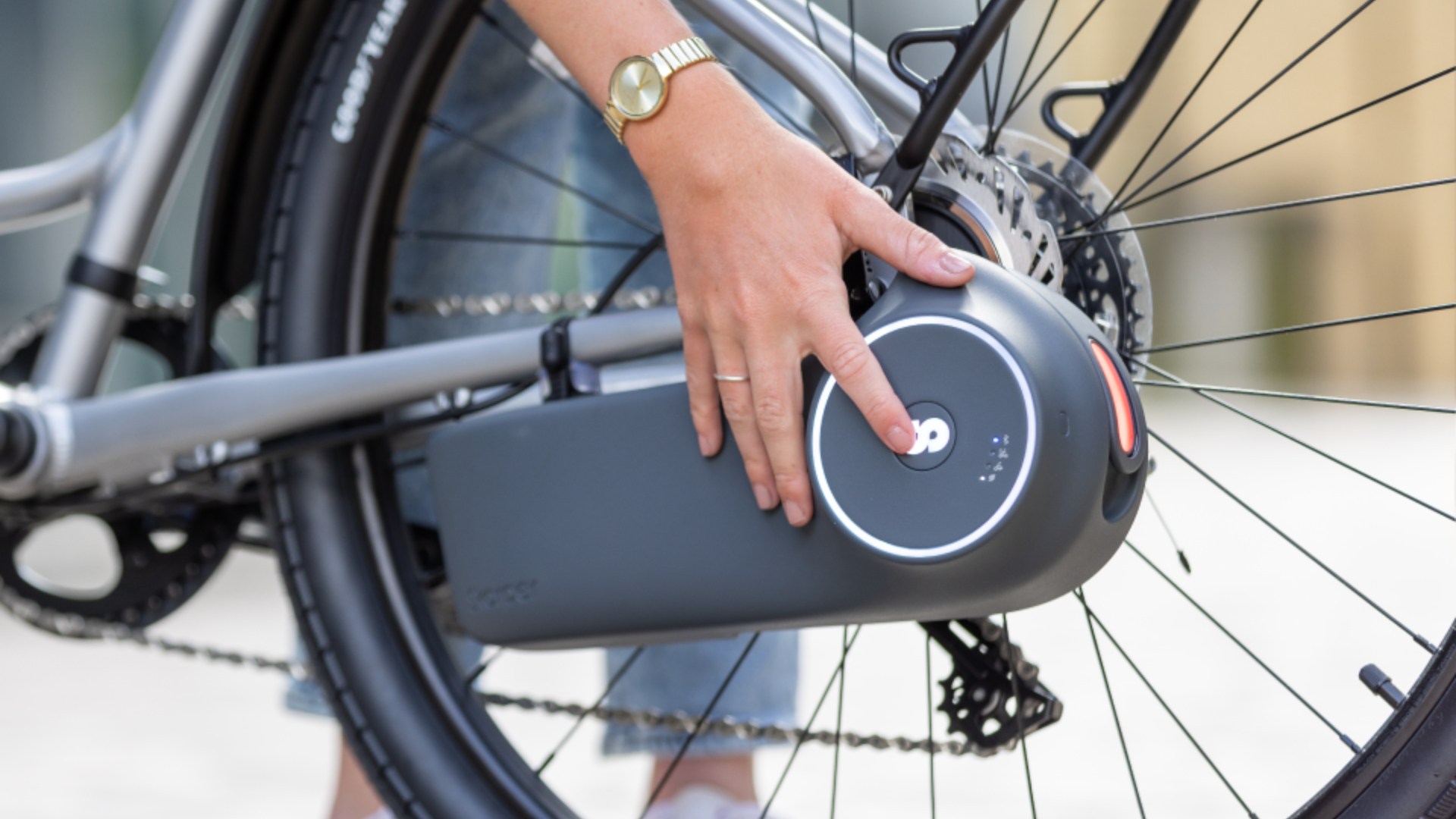
Matt Ischt-Barnard
The best electric bike conversion kits are becoming increasingly popular among cyclists. Why, you ask, when there are now electric bike options for every type of rider? It is simple; so many people have a perfectly good bike in their garage or shed gathering dust, that only seeing the light on a nice sunny summer's day. It's also far more sustainable; why throw away something to buy something almost identical? The best electric bikes can increase the distances possible with commuter bikes and replace a car for running errands around town, but it is no secret that the electric bikes aren’t cheap.
Enter the best ebike conversion kits.
Simply put, e-bike conversion kits provide an electric boost to a traditional bike without the cost of a full e-bike. This can be achieved in several ways, most commonly by adding a hub motor to either the front or rear, or by incorporating a drive unit near the bicycle's crank. However, systems like the Skarper DiscDrive unit minimise compatibility issues with their click-on system.
It's worth noting that there are literally thousands of electric bike conversion kits on the market, partly due to their popularity with food delivery riders. Navigating which systems are first legal and compliant with the laws in your territory, as well as being safe, can be a daunting task. Thats why here at Cycling Weekly, every conversion kit you see in this guide is legal for use in the US and UK/EU. More importantly, these are all systems we have actually used and tested ourselves and from reputable brands that offer support. Like our best overall electric bike conversion kit, the Swytch Bike Air, its simplicity, low weight, and low cost offer the trifecta that has seen it awarded 4.5 stars out of 5.
The Quick List
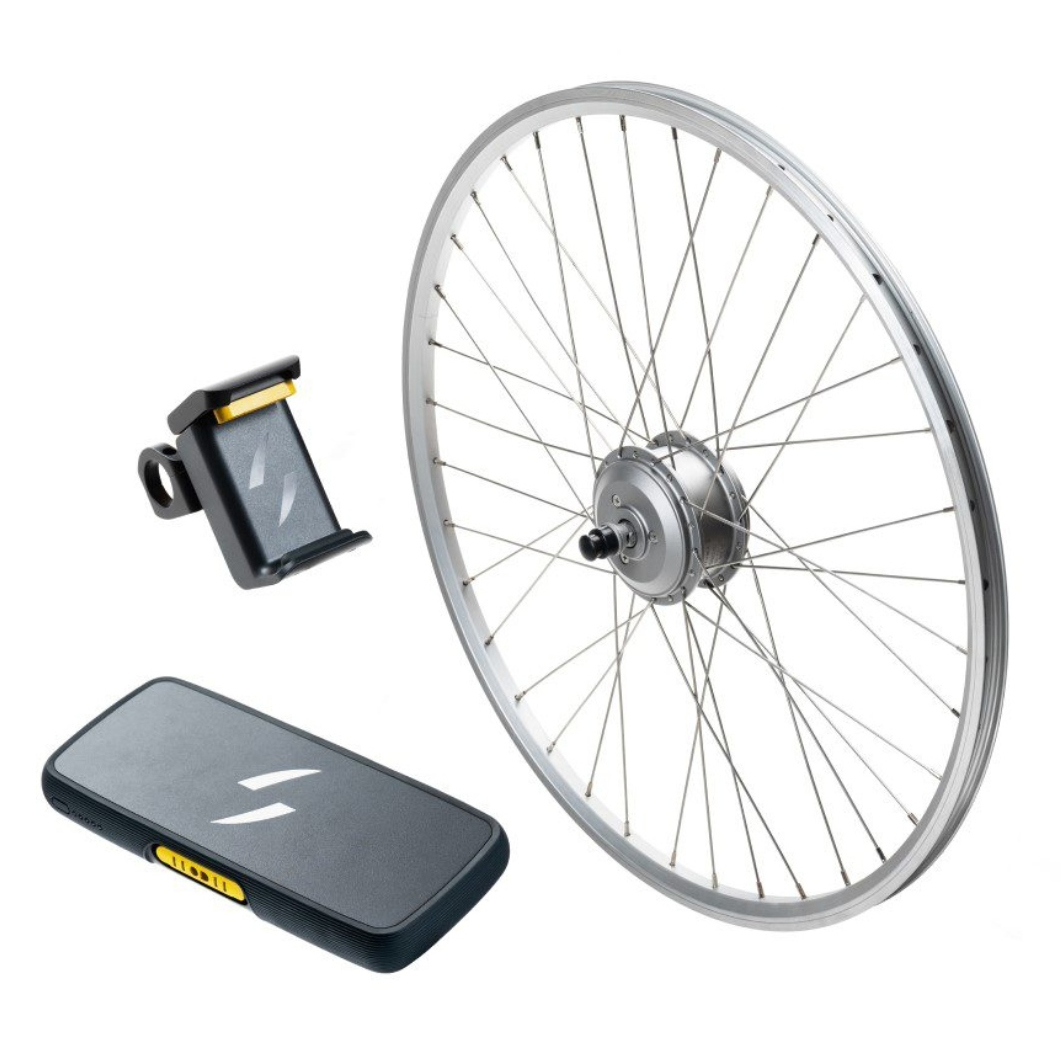
The Swytch kit is super simple: just swap out your front wheel, wire up the controller and battery and you're off. The battery is also very compact, allowing you to remove it from the bike easily to carry with you.
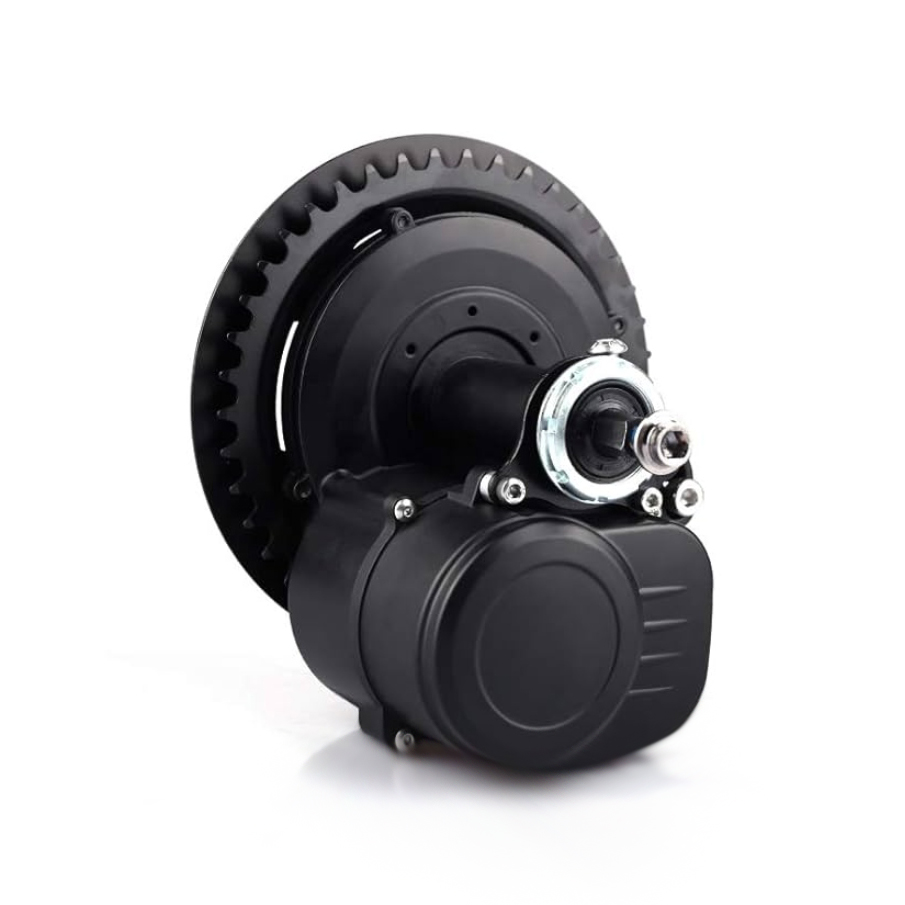
The TongSheng kit positions the motor at the centre of the bike, so it will fit to a wide range of designs. It's lightweight for its high torque and power output, although you'll need to buy the battery separately.
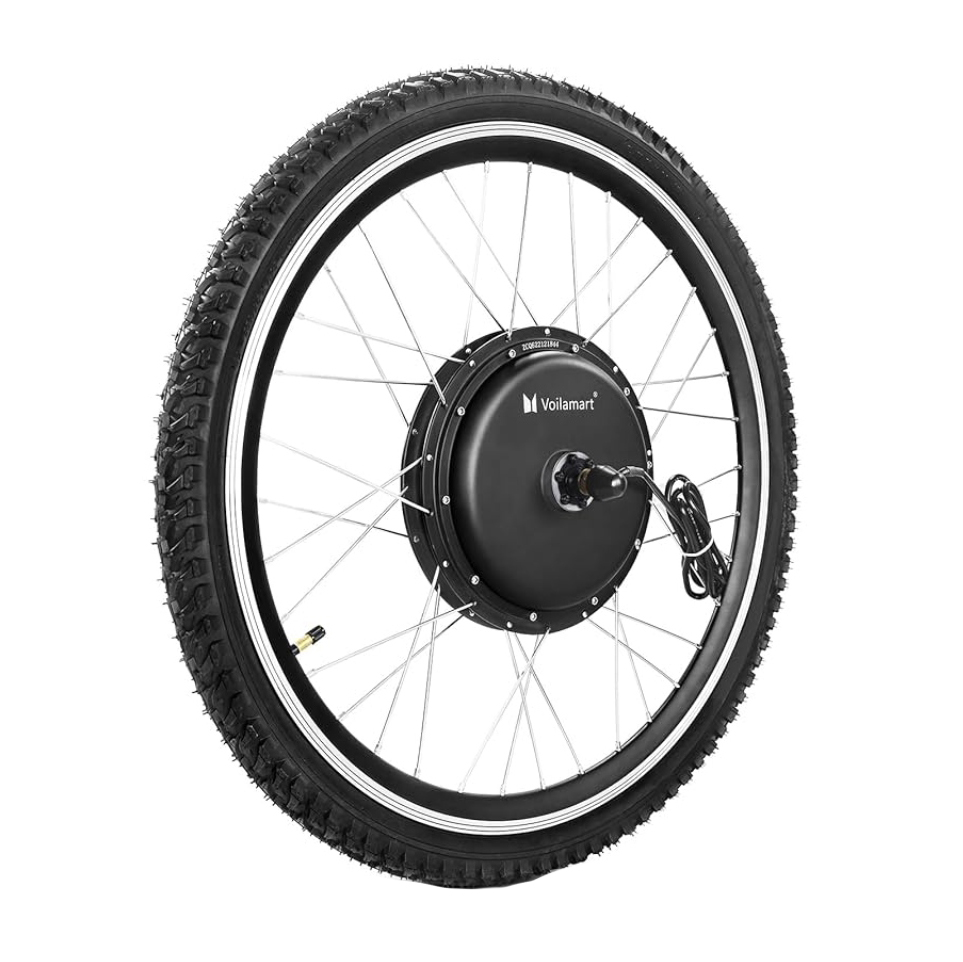
The Voilamart kit is an inexpensive rear wheel conversion option, although you'll have to source a battery separately. It's slightly fiddly to fit as well and requires additional waterproofing if you plan to ride in wet weather.

The Skarper DiscDrive has effectively beaten the system and offers one of the widest compatibilities of any ebike system; it also helps it is incredibly easy to fit and feels very strong out on the road.
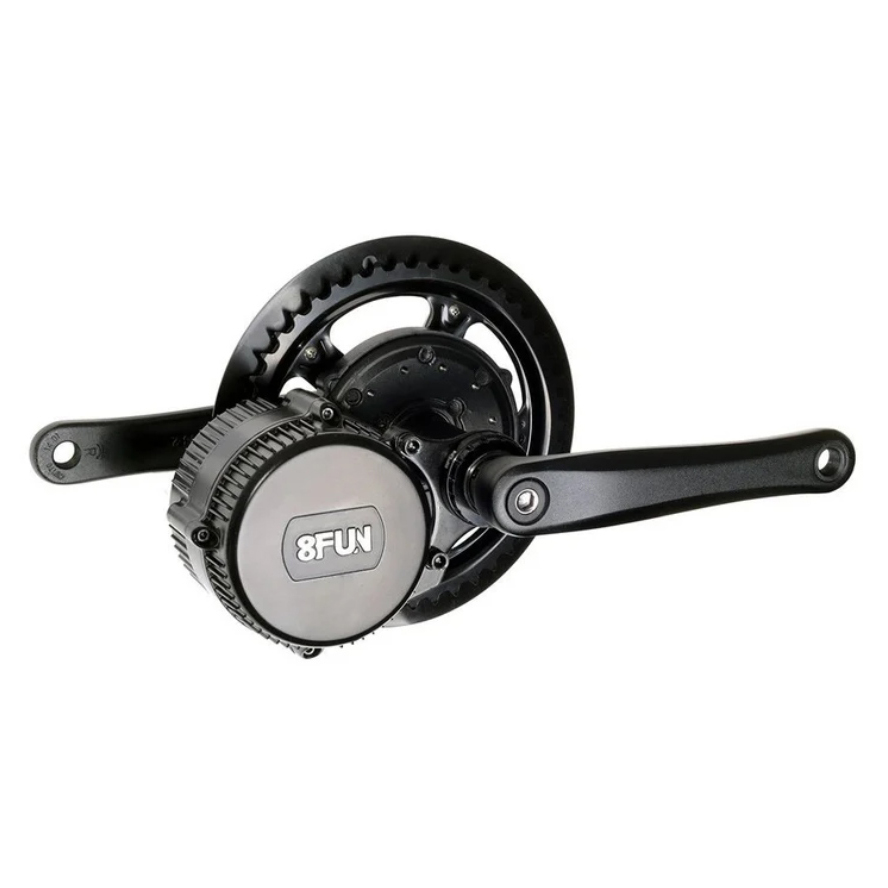
By adding power at the cranks, the Bafang mid motor kit allows the use of any wheels and can deliver more torque. However, the motor's position limits clearance and you will need to source your own battery.
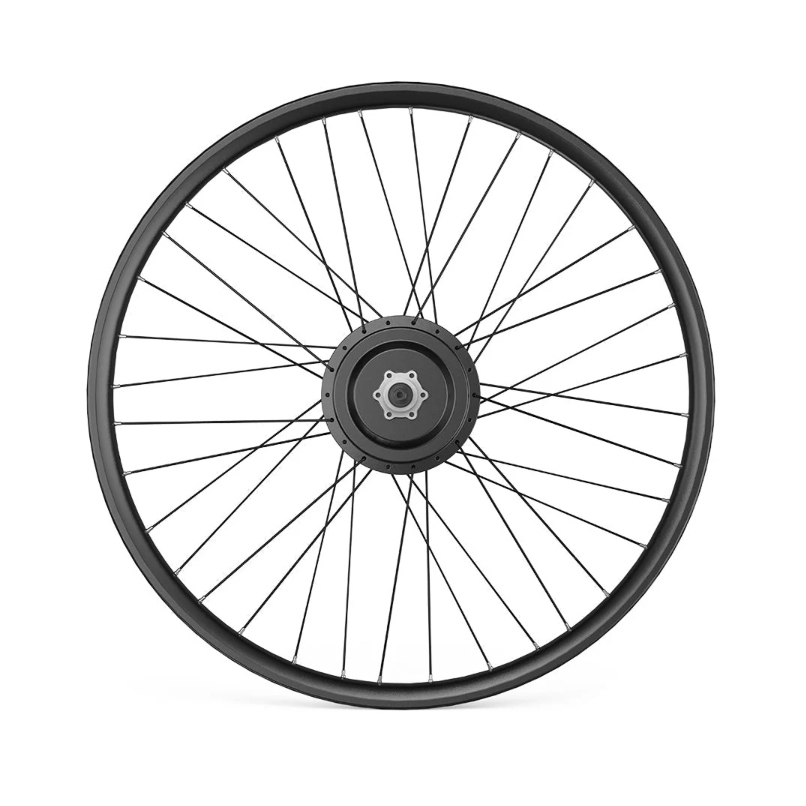
Available in different size options, the Bafang front hub motor kit replaces the bike's front wheel. It's decent value but can be fiddly to set up correctly.
The Best Electric Conversion Kits 2024: Our picks
Best Overall
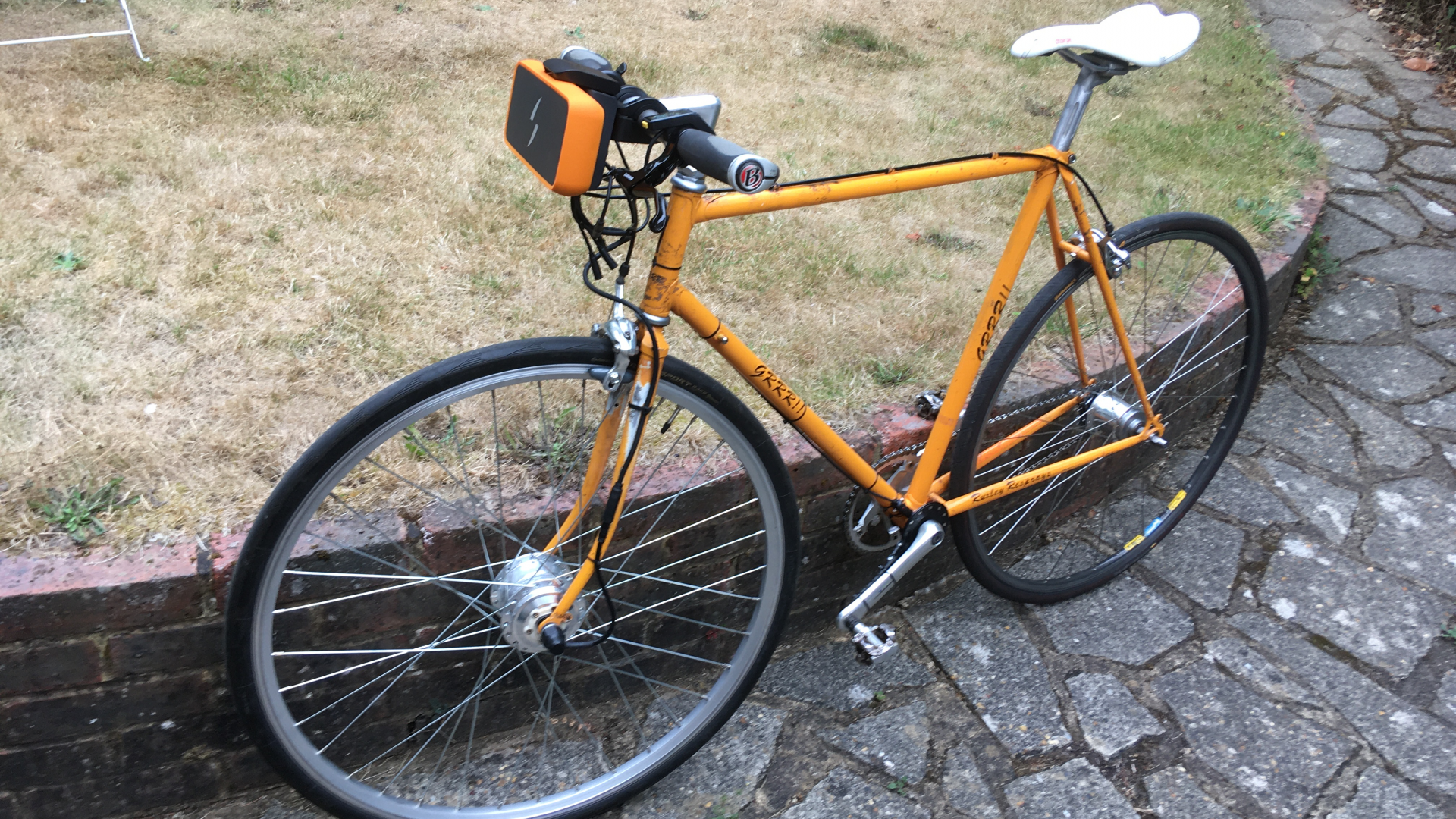
The Swytch e-bike conversion kit is compact, light and easy to fit
Specifications
Reasons to buy
Reasons to avoid
The newly updated Swytch system is one of the simplest conversion kits to fit out there. The latest version, launched in August 2022, has a smaller, neater battery pack that improves the bike's dynamics and lowers its weight. There's the choice of the Air battery (700g, range 15km) or the Max battery (1,100g, range 30km). Both use the same mount, which places the battery on the front of the handlebar.
The motor sits in the front hub and we found it to be pretty discreet. Incidentally, the new batteries will work with the original motor and pedal sensor, so if you already own the original kit you can upgrade it with just a new battery without having to buy the whole kit again.
The Swytch kit is incredibly easy to fit. It took us around 30 minutes working at a steady pace.
We tested it on both a reasonably light two-speed steel bike and a heavier Pinnacle utility bike. It transformed the ride of the two-speed bike, making it fast, nimble and responsive. We also found the stated range to be conservative: after 20 miles on setting number two (medium assist) it had only used two bars out of five on the battery.
With the heavier Pinnacle on maximum assist (and on draggy routes) we were getting slightly under the 30km for the Max battery. As with all e-bike batteries, range depends on the terrain, weight of bike and level of assistance.
Great customer support makes this one of the best kits for people who are new to working on their bike and who aren't familiar with electrics. And even if you do have a strong background in both those areas, a simple system is always appreciated.
Read our full Swytch eBike Conversion Kit review
Best mid-drive
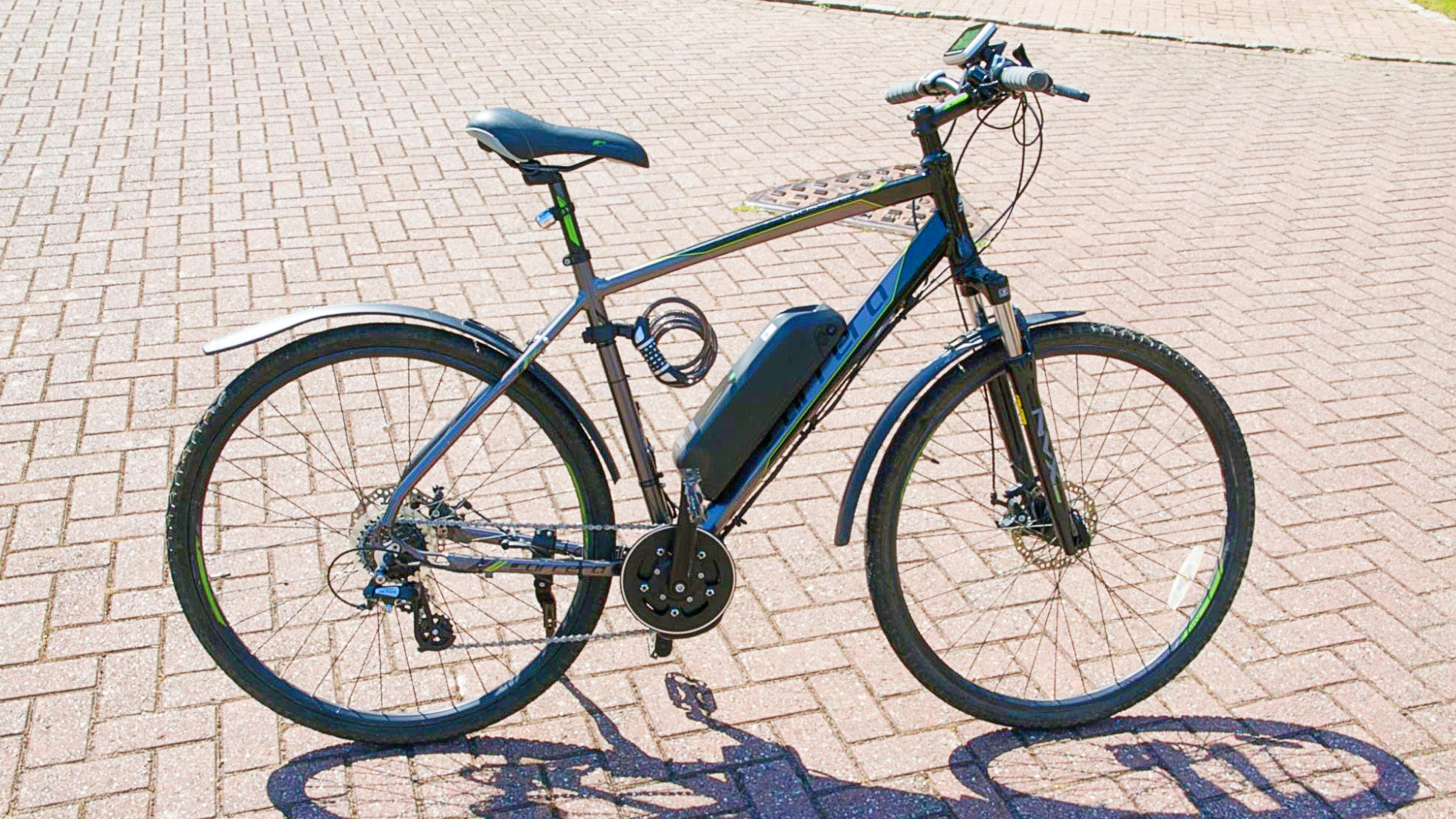
You can choose your own battery to go with the TongSheng mid-drive motor
Specifications
Reasons to buy
Reasons to avoid
Like the Bafang mid-drive system below, the TongSheng offers the same benefits of compatibility with a wide range of bike designs and a high torque for steep hills and off-road terrain. However, the TongSheng mid-drive does manage to be a little lighter than the Bafang for approximately the same power.
This model doesn't come with a battery, so you'll have to source your own 36v item. As a rule of thumb, around 10Ah will give a range of 29km / 18mi, whereas going up to 18Ah will typically give around 53km / 33mi, so be sure to factor that in when you're making your choice.
There's a huge range of batteries sold on Amazon, but Green Cell is a particular brand we'd recommend.
We found fitting to be reasonably easy. As with most mid-drive systems, you replace your crank and chainring with the one provided in the kit. There's an LCD display for attaching to your handlebars and you'll need a battery to be hooked up to the motor.
Read our full TongSheng TSDZ2 ebike conversion kit review
Best Budget
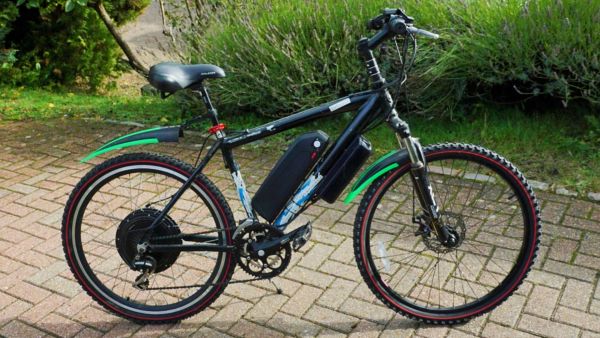
A rear wheel swap adds a hub motor with the Voilamart kit
Specifications
Reasons to buy
Reasons to avoid
We've also tested the Voilamart kit, which comes with six main parts: the replacement rear wheel, the replacement brake levers, the control screen, pedal sensor, throttle and the control box. It doesn't come with a battery, however.
On review, we found the kit pretty straightforward to fit, although you'll need to remove the bike's crank to fit the pedal sensor and this element of the conversion was a bit fiddly. Another potential drawback is that the connectors, which link to the control unit, aren't waterproof, with only a bag supplied to house the delicate electronics. While it does a good job of keeping everything tidy, we decided to buy a plastic enclosure, cut the wires to length, solder the connections and then heat shrink for added protection.
As for the ride, the rear wheel kit delivers plenty of power. However, since the pedal sensor only detects when you're pedalling rather than how hard you're pedalling it delivers the power as soon as you start to turn the crank arms. Fortunately, you can quickly adjust the level assistance, with five power options available.
All in all the Voliamart rear wheel kit is an affordable way to 'go electric', although it requires you to be mechanically competent to fit it and you'll need to factor in the additional cost of a battery.
Read our full Voilamart e-bike conversion kit review
Best for compatibility
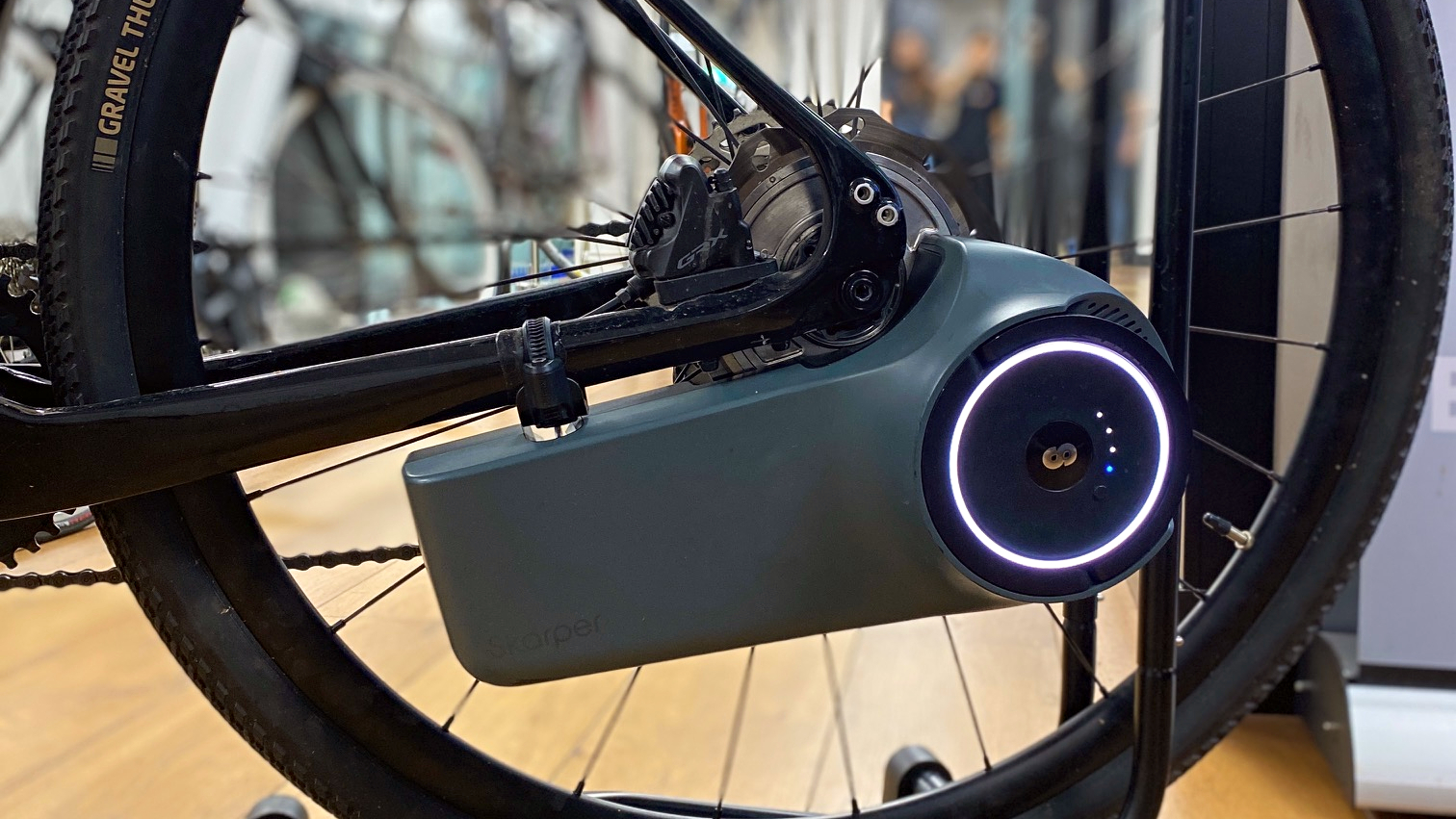
4. Skarper DiskDrive ebike drive system
Our expert review:
Specifications
Reasons to buy
Reasons to avoid
While the rain played havoc with my test ride plans, Skarper co-founder Uri Meirovich kindly lent me a pair of waterproof trousers and guided me expertly through the streets of North London.
Uri and I headed straight for the hill, which was, yes, the only slight hill in the area to show what Skarper was made of. At 3.5% average for around 500m/0.3 miles, to your seasoned cyclists, this wouldn't be of any trouble. However, to those who are not, and certainly in the biblical rain we found ourselves riding through, it was an obstacle many could do without. Having to stop several times for traffic lights and buses, the Skarper felt very strong in turbo mode, and the gradient didn't trouble the performance, with little to no noticeable drop-off, even when nearing the assistance cut-off.
Back on the flatter terrain and into eco mode, you notice further how strong the turbo mode is. It would be on this point if I were to pick at the Skarper team. Considering there is no way to change the modes other than the button on the unit, a more dynamic mode or Bluetooth remote might be a significant development. Given how little assistance the eco mode provides, the pause mode could work similarly if you set it in turbo.
Read my first ride review of the Skarper ebike drive system
Best for off-road

The Bafang motor provides 80Nm torque
4. Bafang Mid Motor Kit
Specifications
Reasons to buy
Reasons to avoid
A mid-motor drive system offers a number of benefits over hub-driven conversion kits. With the power delivered at the cranks, it can produce more torque, making it more effective on particularly steep and bumpy terrain.
Another perk is that the compatibility is much greater – no concern about wheel diameters, hub widths, axle standards and brake type. No matter whether you're running rim brakes or disc, quick release or thru-axle, the crank-driven system is compatible with all.
The only proviso is that the frame material must be alloy and the bottom bracket width is 68–73mm – but that covers most bikes you're likely to be fitting this system to.
There are a few aspects to be aware of, the first being that this system doesn't include a battery and that typically makes up about half the cost of a conversion kit. Finding an e-bike battery is quite straightforward with many being sold on Amazon, with Green Cell being among those we'd recommend.
Just make sure to get a 36V one for this motor as a higher voltage can damage it. Also, you should be aware that capacity of 10Ah will give you a range of about 29km / 18mi, while a capacity of 18Ah typically gives about 53km / 33mi – so be sure to factor in the distances you're planning on riding.
Best budget front hub

The Bafang front hub motor makes for quick set-up
6. Bafang front hub motor kit
Specifications
Reasons to buy
Reasons to avoid
Bafang is a well-established maker of electric bike motors and offers a front hub-based motor; if you’re not a fan of the bulky profile a mid-motor conversion system creates. You can buy this kit without a battery – although why would you? – but if you sensibly also opt for a power pack there's a choice of amp hours, and you can select either a downtube or a rear-rack mounted version.
The setup follows the same principles as most front-wheel e-bike conversions. First you need to set up the wheel with a disc rotor, tyre and inner tube and install that into the bike. Then attach the cadence sensor – so it can tell when you're pedalling and need assistance – then attach the battery and the LCD display and you're essentially good to go!
It's worth bearing in mind that although this conversion kit comes in many different wheel sizes, it is only compatible with bikes that have a front disc brake and a Quick-Release axle. If your disc brake bike is a newer, more expensive model, it might not be compatible, so worth checking first.
Remember, that in the UK electric bike laws mean that e-bikes are not permitted to have a power output of more than 250w and shouldn't propel the bike when it's travelling more than 15.5mph – you'll have to make sure you select the right model with the relevant limitations.
How to convert your bike to an e-bike in four steps
Here's our step-by-step guide to how to add an electric bike conversion kit to your pedal-powered bike.
1. Swap the tyre and tube
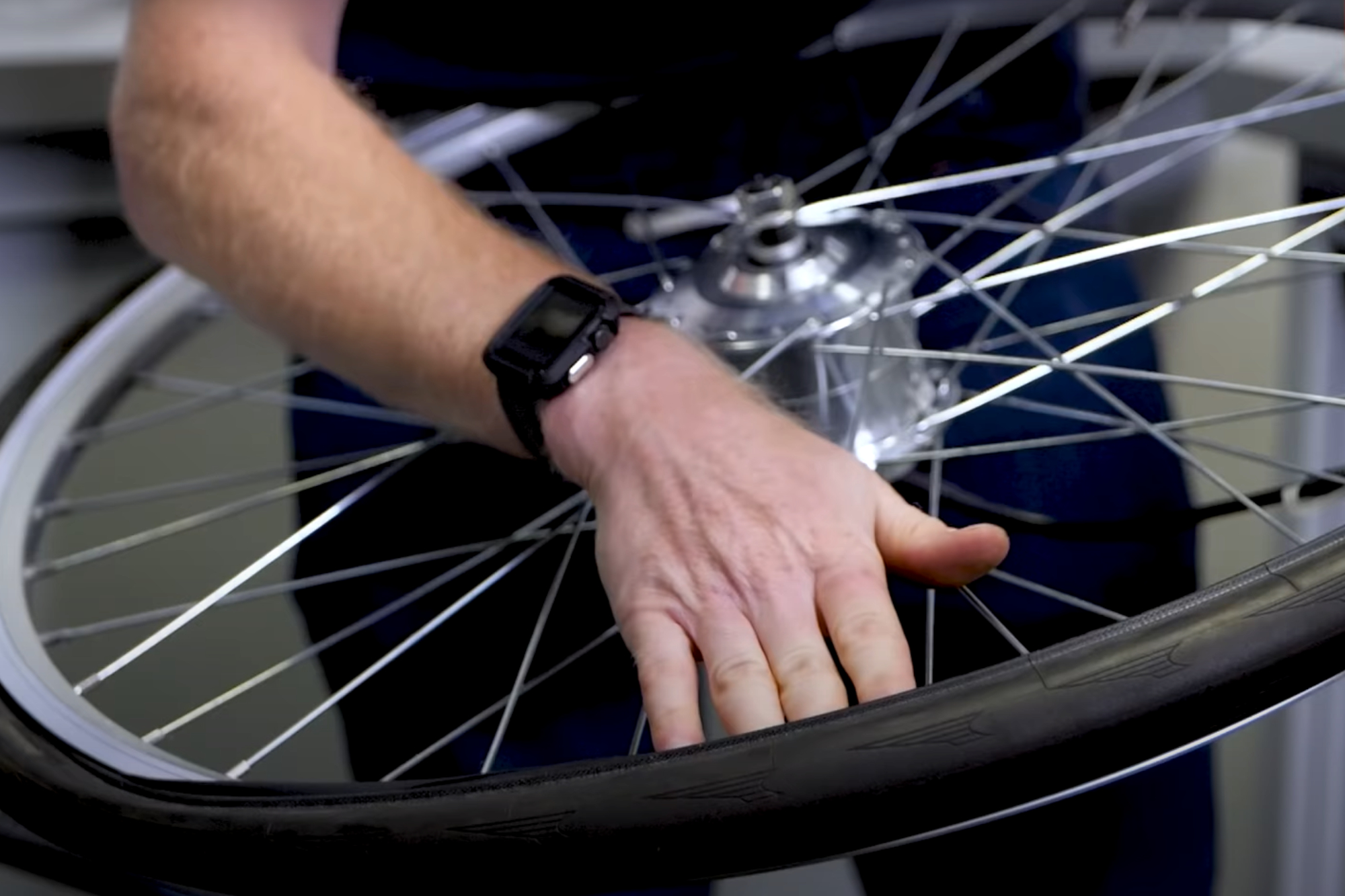
First remove your tire and tube
Firstly, remove the tyre and tube from your current front wheel and then install them on the new wheel from the kit. Make sure to check if the tyre is directional, if it is, ensure that the tyre is mounted so that the cable sticking out of the hub is on the left-hand side (non-drive side) when the wheel is installed in the bike – otherwise, it’ll be powered in the opposite direction to your direction of travel!
To swap the tyre and tube over, you will need some tyre levers and a pump.
The final points are to do up the nuts on the wheel’s axle to keep it firmly in place in the forks and to check that the brakes are correctly adjusted for the new wheel.
2. Attach the bracket to the handlebars
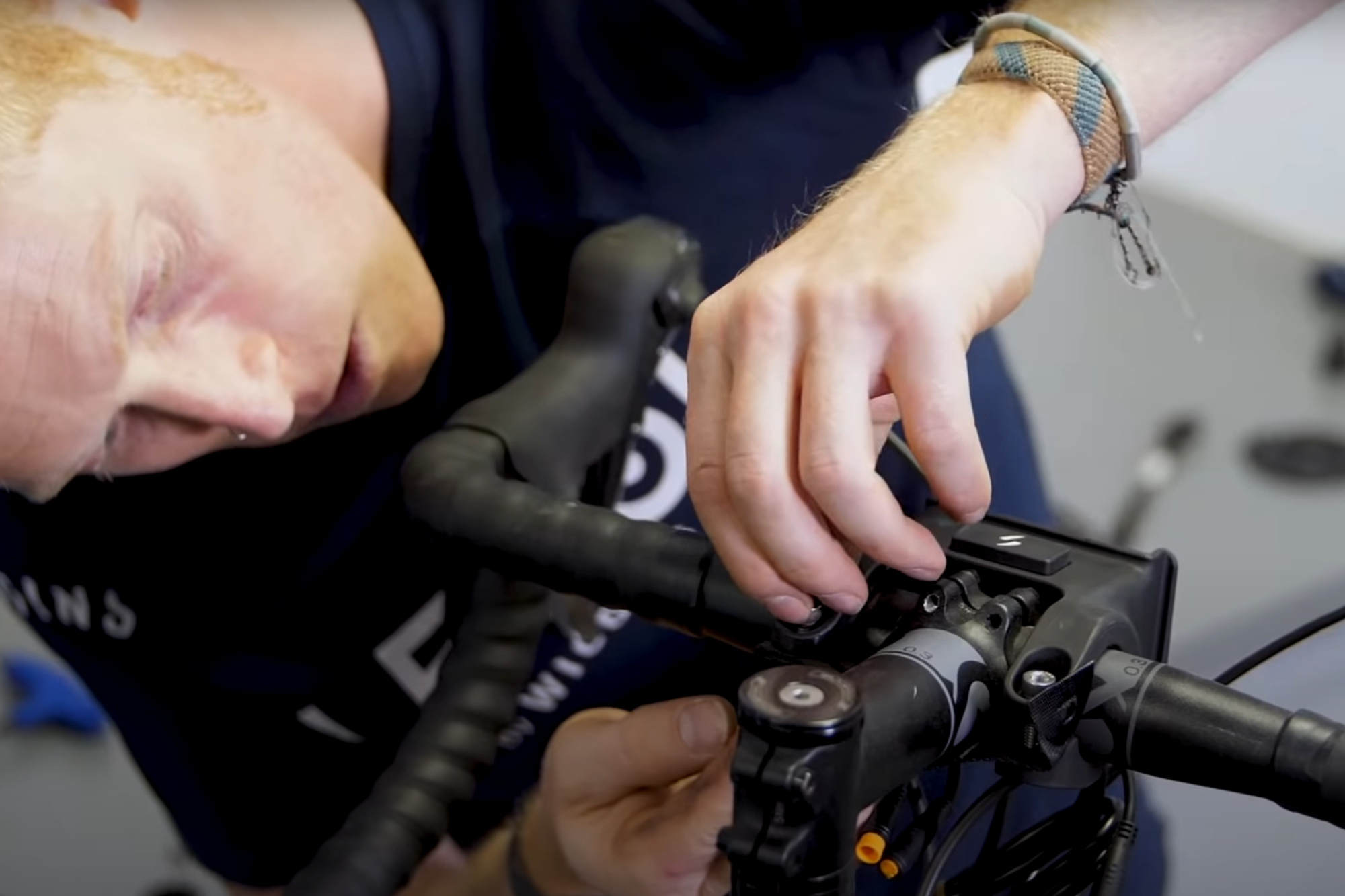
Next attach the bracket to the handlebars
There is a strap that needs to be attached to the bars to keep the bracket in place and stop it from rotating around. There are also some adaptors included in the kit which can be used if your handlebars are a little skinnier.
But essentially all that’s needed to be done here is a couple of screws to clamp the bracket tightly to the bars.
3. Attach magnet disc and sensor
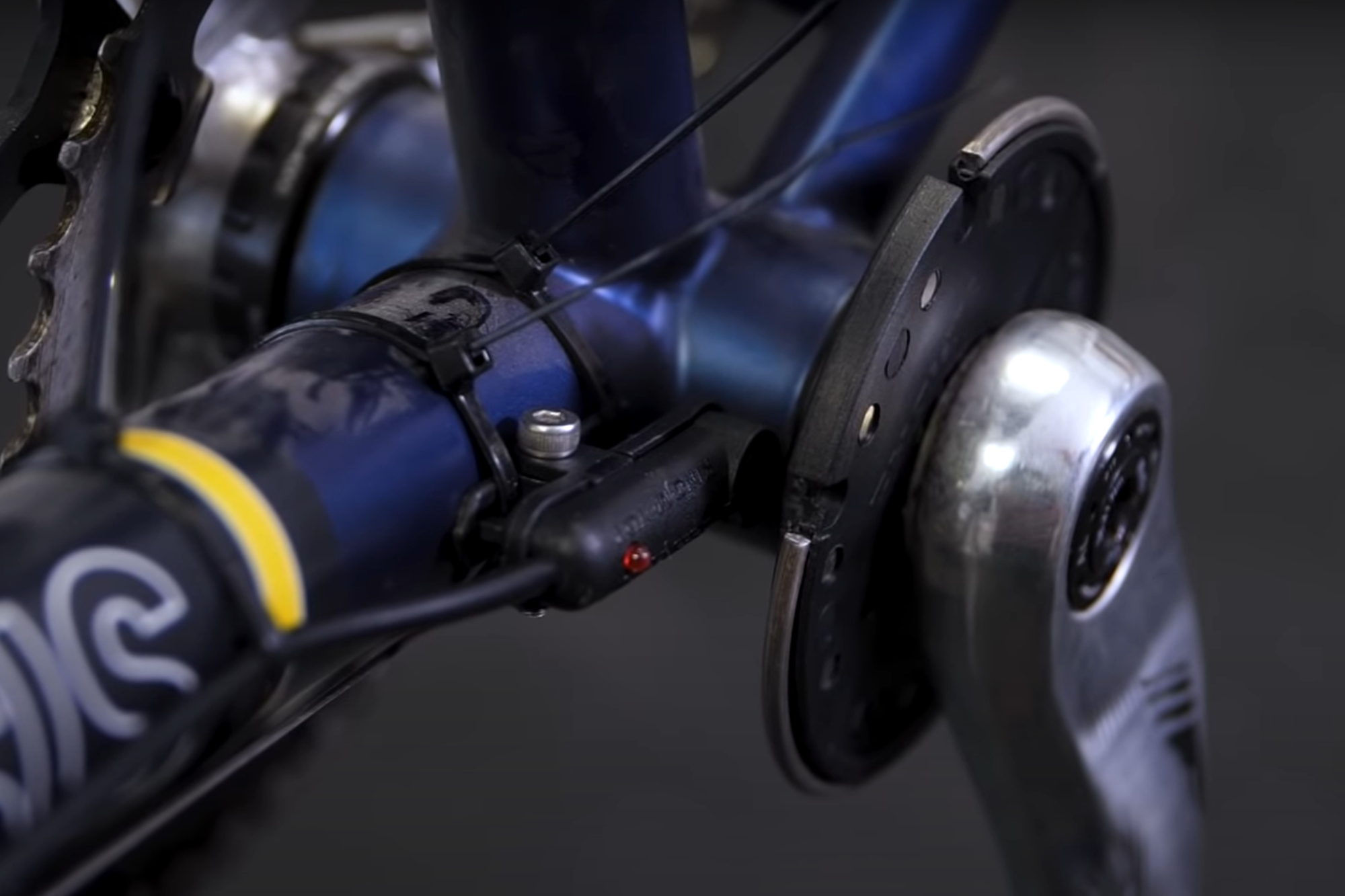
Attach the pedal sensor unit to the bike
The magnet disc has a split design so it can just clip around the inside of the left (non-drive side crank) and is then held in place by its retention ring. Next, stick the sensor on the frame directly in line with the magnets – this will ensure that the sensor can tell when the cranks are moving.
4. Plug in the cables

Finally wire everything up
The thickest one is the main power cable and that just needs to be plugged into the cable extending from the hub. The other orange cable attaches to the cadence sensor and this just needs plugging in as well.
It’s then a good idea to use some cable ties to tidy up the lengths of the cables a little bit, so they aren’t flapping about and risk getting caught on the spokes or on the cranks.
The blue cables, you don’t need to worry about, these are for an optional brake sensor upgrade kit.
Why convert your bike to an e-bike?
What types of conversion kit are available?
You can get conversion kits that power your front or rear wheel or power the bikes via the cranks.
Wheel-based systems usually have a hub motor and require the replacement of your existing wheel with a compatible motorised one.
The alternative is a system like the Rubbee that drives your wheel by pushing on the tyre. Tyre wear can be an issue here though.
Finally, some systems power the e-bike via the bottom bracket.
Usually, the e-bike's battery will bolt onto your frame or be attached to your handlebars, although sometimes you can fit a battery pack to a rear rack.
We've more on compatibility - which can be an issue - below.
How much does it cost to convert a bike to an e-bike?
Prices vary depending on the type of conversion kit and the size of the battery. To give a rough band, you can expect to pay a total of between £500 and £800 from a reputable brand, but there will be outliers at either end.
Is it worth converting a bike to an e-bike?
There are many reasons to upgrade your bike to offer a little e-assistance. On the one hand, it can greatly increase the usefulness of your bike, enabling you to replace short car journeys – such as around town, to the shops, or to work – with going by bike instead.
It’s a lot more environmentally friendly getting about on two wheels than in a two-ton metal box. It can also save you time – bikes can take more direct routes and are less affected by traffic, as well as eliminating the need to search for a parking space at the other end.
But beyond just their practical benefits, e-bikes can also be a potent tool for boosting your fitness. Consistency is key when it comes to exercise, so making commitments with friends is a great way to ensure you’re heading out the door. Previously, differing fitness levels could make it difficult to find a riding partner but with an e-bike levelling the playing field, getting in a productive workout (for both of you) with a friend is much easier to do.
Added to that, an e-bike can be much more motivating in that it opens up a far greater range of roads than you’d be able to access just under the power of your own two legs. Exploring new roads is part of the fun of riding a bike and an e-bike can help preserve that.
Can you convert any regular bike to an e-bike?
Most bikes can be converted to an e-bike – it just requires getting the matching the right conversion kit to match the specification.
For conversion kits where the motor is located at the wheel’s hub, you’ll need to consider the wheel’s diameter, the width and axle standard of the hub and whether it uses rim or disc brakes. For instance, a 700c (AKA, 28”) disc brake wheel with a 100mm wide quick-release hub is a relatively common spec. Once you’ve determined what type of wheel you need, the conversion is quite a straightforward process
Crank-driven systems are generally easier in terms of determining compatibility; the requirements are typically just an alloy frame and a bottom bracket width of between 68 and 73mm – which is the standard for all road and mountain bikes, it’s only specialist bikes that have a different spacing there. In replacing the crankset, these systems are a bit more involved to fit than a hub system, but still well within the remit of a home mechanic.
Other kits, such as those that directly drive the rear tyre, have almost universal compatibility – provided your tyres aren’t too heavily treaded.
Are electric bike conversion kits any good?
You won’t be getting the very best motors and the largest, seamlessly integrated batteries with an e-bike conversion kit. But with that said, e-bike conversion kits are much cheaper than purchasing a whole new e-bike and they do deliver many of the same benefits.
Converted e-bikes are great for commuting and utility cycling, giving that extra boost to help flatten hills, motor along the flat and lug about heavy loads. E-bike conversions are also good for leisure cycling, helping to moderate your effort level as needed and greatly extending the range you can explore.
For more specialist utility needs, buying a new cargo e-bike would help boost your carrying capacity and range. Equally, for the aesthetically conscious, the latest breed of e-road bikes are almost indistinguishable from a non-powered bike at first glance. Then again, both those options are much more expensive than a conversion.
Do e-bike conversion kits affect the bike's warranty or legal status?
Short answer: It depends.
If you're buying a brand new bike, there's a possibility e-bike conversion kits will void the original manufacturer's warranty as you're technically 'modifying the bike's original components'. But chances are you'll be fine as long as you don't return your bike with the conversion kit on. It's very easy to remove a conversion kit and restore the bike to factory condition.
As for legal status, this varies according to your local e-bike legislation. In the UK for example, you can ride an electric bike as long as you're 14 or over and the electric motor is within the maximum power and speed requirements. We'd definitely advise researching the e-bike laws in your area before purchasing a conversion kit.
How we test
Where we've been able to link to a review, it means that we've put the e-bike conversion kit through its paces. We've assessed how easy it is to fit and maintain as well as other factors such as the quality of the components, battery life and charge time. Riding the bike once fitted with the kit, we've taken into account the ride quality, the ease of use and the battery range.
Where we haven't yet had the chance to review an item, we're still confident in recommending it as one of the best, because we either know the brand really well and have probably tested another product or the previous version and can still happily recommend it as one of the best.
Get The Leadout Newsletter
The latest race content, interviews, features, reviews and expert buying guides, direct to your inbox!
Rob has been Content Director of Cycling Weekly - and stablemates Bikeperfect, Cyclingnews.com and MBR - since May 2021. Before that he spent two years in similar role at Bikeradar, which followed 12-years as Editor-in-chief of Cycling Plus magazine and eight years at Runner's World. In his time as a cycling journalist he's ridden from London to Paris at least twice, London to Bristol once, completed the Fred Whitton Challenge, L'Etape du Tour and Maratona dles Dolomites. He's also jumped into the broom-wagon at La Marmotte and Oetzaler Radmarathon.
- Matt Ischt-BarnardEcomm and Tech Writer
-
 Mike's Bikes 'mega sale' is live and site wide with discounts over 50%
Mike's Bikes 'mega sale' is live and site wide with discounts over 50%Running until Sunday all products are discounted including complete bikes, clothing, smart trainers and much more
By Luke Friend
-
 Can you be a pro athlete and an environmentalist? Earth Day reflections from a pro cyclist trying to be both
Can you be a pro athlete and an environmentalist? Earth Day reflections from a pro cyclist trying to be bothHow Sarah Sturm reconciles her life as a pro cyclist with her environmental values
By Sarah Sturm